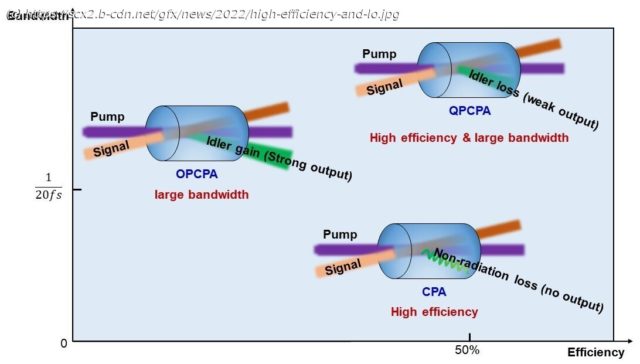Since the earliest demonstration of chirped-pulse amplification (CPA) and optical parametric chirped-pulse amplification (OPCPA), femtosecond lasers have been able to deliver ultrahigh peak powers up to ten-petawatt (PW), thereby paving the way for compact particle accelerators and X-ray sources.
September 15, 2022
Since the earliest demonstration of chirped-pulse amplification (CPA) and optical parametric chirped-pulse amplification (OPCPA), femtosecond lasers have been able to deliver ultrahigh peak powers up to ten-petawatt (PW), thereby paving the way for compact particle accelerators and X-ray sources.
To further increase peak powers, laser amplification schemes with both high conversion efficiency and large bandwidth are needed. However, CPA laser amplifiers suffer from relatively narrow gain bandwidth, whereas OPCPAs suffer from relatively low signal efficiency or pump depletion due to back conversion.
In a new paper published in Light: Science & Applications, a team of scientists, led by Professor Liejia Qian from Key Laboratory for Laser Plasmas (MOE), School of Physics and Astronomy, Shanghai Jiao Tong University, China, and co-workers have demonstrated an ultrahigh-efficiency and low-noise scheme of quasi-parametric chirped-pulse amplification (QPCPA), which is a variation of OPCPA by dissipating the idler with strong crystal absorption.
The idler dissipation obstructs the back conversion effect and enables the QPCPA performance of high efficiency, large bandwidth, and robustness against phase mismatch.






